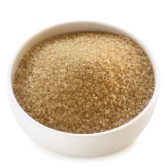When we suffer from unusual thirst, joint pains, headaches, urinating too often, numbness, rapid weight loss, unusual bleeding, lumps and shortness of breath these can be symptoms of a major degenerative disease such as cancer, diabetes, high blood pressure, Alzheimer’s disease, or heart problems. What we do not do, however, is recognise these degenerative diseases as symptoms in themselves. Symptoms of what, I hear you ask. The answer is “symptoms of the root causes of all degenerative sicknesses” and if you remove genetics from the equation then you are looking at only three things ….. GLYCATION, OXIDATION & INFLAMMATION, so, why treat the symptoms when you can treat the root cause of the disease. Do you want to be healed or do you want to manage your sickness? The articles below should set you on a path to better health. By making some dietary and lifestyle changes that reduce glycation, oxidation and inflammation you should also reduce the risk of contracting a degenerative disease. REGENERATE OR DEGENERATE, THE CHOICE IS YOURS
Glycation
Beware of AGEs as you AGE
Every second a destructive process called glycation occurs throughout the body. This process occurs when excess sugars caramelize the fats and protein in your body. This begins very early in life, even before actual birth and continues throughout life, albeit at a very slow rate in normal bodies. In diabetics however, the process is accelerated due to the presence of excess glucose. However this can be reversed with the reduction of glucose as this will unhook the sugars from the fats and proteins to which they are attached. Glycation has been recognized as a major contributor to aging and perhaps cancer. This damage and chronic inflammation resulting from sustained high blood sugar in diabetes can lead to cataracts, Alzheimer’s disease, diseases of the pancreas, liver and much more. Glucose provides the fuel for glycation, the combination of protein and glucose which, including oxidation and inflammation results in the formation of “advanced glycation end products” AGEs. Once AGEs are formed they interact with neighbouring proteins to produce cross linkages that toughen and brown tissues. This toughening has a tremendously adverse effect on those organs that rely on flexibility for proper functioning. It has been shown that it is glycation that hardens the arteries in diabetic individuals. AGEs trigger a series of destructive events including a 50 fold increase in free radicals. Diabetes, a condition of accelerated aging, generates AGEs with the arteries, the lens and retina of the eyes, peripheral nerves and the kidneys under specific attack.
Cateracts are also likely to form as a result of glycation. This type of glycation which occurs in the body and is referred to as endogenous glycation is associated with increased damage from oxidation. The proteins in the skin that make us look young, collagen and elastin, are prone to glycation attack which gives rise to sagginess, wrinkles, discolouration and lack of radiance.
Foods that cause glycation include soft drinks, white rice, French fries (chips), cakes, all breads, canned fruits, potatoes, pies, doughnuts, fruit juices and puddings. Remember, the main culprit is SUGAR and we are not talking about the two lumps you put in your cup of tea. All the foods mentioned earlier contain sugars but fruit juices and soft drinks sometimes contain three of the worst sugars of all, namely, fructose, aspartame and high fructose corn syrup (HFCS).
Glycation also occurs outside the body and evidence has shown that diet is a significant source of highly reactive AGEs. AGEs, you may recall, are the end products of advanced glycation. This type of glycation is responsible for the browning of foods during cooking. Food processing, especially heating, has a significant accelerating effect on the production of free radicals. Heat helps create tastes that we enjoy and food manufacturers have been using this knowledge to boost the flavour and colour of foods by adding synthetic AGEs to them. Baked goods, dark colas, coffee and most brown processed foods have undergone this process. However, whilst these foods may be tasty the reaction that created that taste also creates suspected carcinogens (cancer causing molecules). Studies have shown a direct correlation between dietary AGEs and markers for vascular disease, this being more pronounced in diabetics. Frying, grilling, broiling and barbequing at high temperatures are some of the worst ways to cook foods. It is better to boil, stew, steam and poach with water and reduced heat.
It has clearly been shown that AGEs make the body age faster than nature intended and we should and can reverse the process by making dietary and lifestyle changes. Certain herbs and spices such as cinnamon, turmeric, black pepper, garlic, thyme, ginger, cumin and green tea have shown anti-glycation properties and if added to your ever day regime should help reduce the incidence of glycation and help you age more healthily. Other foods that slow down the aging process are avocados, coconut, cocoa(not chocolate), as we are reducing the sugar content, omega 3 fatty acids, as found in cod liver oil, spinach, mackerel and liver and let us not forget water. Glycation is a fact of life. Aging is a fact of life. We cannot stop the process but we can slow it down and sail into old age with our faculties intact. Remember, SUGAR is the main culprit.
Oxidation
Don’t Rust out – Keep your Gloss
An apple turns brown after being cut. A car’s bodywork becomes rusty after an accident and a cut on your skin becomes raw and inflamed. This is all part of a natural process called oxidation which happens to all cells in nature including the ones in our bodies. When oxygen interacts with cells of any type a change occurs in those cells. They may die, as is the case of rotting fruit. In the case of cut human skin, dead cells are replaced by fresh, new cells and the cut is healed.
The birth and death of cells in the body is a continuous process and one that is necessary to keep the body healthy. Oxidation, therefore, is a very natural process. Our bodies use oxygen very efficiently but about 2% to 3% of the oxygen we inhale is not used positively and as a result about 1% to 2% of our cells get damaged in a similar way to the apple becoming brown when it is damaged or exposed to oxygen. In other words they become oxidized and turn into “free radicals”. “Free radicals” is a term used to describe damaged cells that can pose a problem to good health. Chemically, they are electrons that have lost a molecule and go on a rampage to steal a molecule from a normal cell. When this happens the cell that loses its molecule then becomes a free radical and so on, and on and a chain reaction is set in motion with these damaged cells behaving quite “radically” . That, however, is not the end of the damaging process. Free radicals also damage the DNA of cells turning them into mutant cells which reproduce as mutant cells, not normal cells and very quickly. Free radicals that are produced as a result of normal cell functions do not create a problem as they are kept under control by antioxidants that the body produces naturally. You may gather from this that another name for “free radicals” is “oxidants.” That is why we take antioxidants to counter the effects of oxidants (free radicals).
There are several external toxins that produce free radicals, such as cigarette smoke and chemicals in the air we breathe, in the food we eat and the water we drink. Drinking alcohol also produces a substantial number of free radicals. In time, if your body’s immune system, which is its defence mechanism, cannot cope with the incessant attacks by free radicals this can lead to a host of chronic diseases such as cancer, Parkinson’s disease, Alzheimer’s disease and heart disease. Stress is also a major factor in oxidation. Other degenerative conditions caused by free radicals include inflammation of the joints (arthritis), deterioration of the eye lens, which contributes to blindness, acceleration of the aging process.
To combat these attacks on our cells and DNA our bodies produce antioxidants, which, under normal situations, can cope with normal amounts of free radicals. Some of these antioxidants are themselves free radicals which scavenge other free radicals. Nowadays, our bodily systems are under attack from every angle and it is possible that they may not be able to cope with the onslaught. Our immune systems could have become weakened by our diets, lifestyles and our environment. We are living at a time when the greatest threat to our health is chemically based, in our foods, water, the air we breathe and even the clothes we wear and not every antioxidant can cope with the types of free radicals produced by these chemicals. It is extremely important therefore to not only take in antioxidants from our food but eat a wide variety of foods that provide our bodies with different types of antioxidants. Foods such as red and yellow peppers, dark green vegetables, guavas, mangoes, tomatoes and citrus fruits provide vitamin C which is a crucial antioxidant. Sweet potatoes, beans, split peas, lentils, brown rice, carrots and dark green vegetables deliver vitamin E. Chicken, eggs, brown rice, garlic, salmon, cocoa, coconut products, black strap molasses and onions provide selenium and beta-carotene is provided by dark green vegetables, red and yellow fruits and vegetables. We must not forget herbs and spices like turmeric, allspice (pimento), garlic, rosemary, oregano, thyme, green tea, ginger, cloves, cinnamon and basil, all very powerful antioxidants which help protect our bodies from oxidative stress. With oxidation metals rust, proteins putrefy, oils get rancid and humans age. In our bodies this rusting or aging process manifests itself by wrinkles, grey hair, crow’s feet, joint pains and reduced functioning of our vital organs. You cannot stop the process but you CAN slow it down so that you reduce the risk of degenerative diseases as you age.
Inflammation
Put out the fire in your belly
At some time in our lives we all experience some unpleasantness. Loss of a loved one, acute injury, persistent illness, bacterial infection or just a bump on the knee can cause us pain. Our bodies respond to these painful incidents with inflammation. Inflammation is a natural, common response to injury, pain and illness and is a very necessary part of the healing process. .It is at the heart of our immune system and can be regarded as the body’s way of protecting itself. Normally it manifests itself through pain, swelling, redness and warmth and in the short term is referred to as acute inflammation. With acute inflammation things happen very quickly.
The big problems with inflammation arise when it becomes chronic. Inflammation is meant to be a short term affair where the body heals itself and puts things back to normal. These days we are exposed to constant, low level attacks on our systems which keep the inflammatory response constantly turned on. Diets high in sugar, highly processed foods, lack of sleep, lack of exercise, chronic stress, prescribed medicines, infections and disconnection from the earth, insufficient intake of omega 3 acids and too much omega 6 and not enough time for relaxation all contribute to chronic inflammation. Chronic inflammation, therefore, is the body’s inability to repair, support and protect itself. If it is out of balance that is an unhealthy situation.
There are many levels of chronic inflammation from simple aches to auto-immune disorders like lupus and rheumatoid arthritis. There are also many different symptoms that can arise from inflammatory response. These can manifest themselves by headaches, cramps, depression or acid reflux and in more extreme cases arthritis, joint pain, heart attacks and more. Chronic inflammation also referred to as “fire in the belly” has been linked to cancer, heart disease, Alzheimer’s disease and all the major degenerative sickness. Aging by its very nature creates inflammation and as we age our ability to bounce back becomes less and less and chronic inflammation becomes our greatest physical issue. Knowing how to keep chronic inflammation at bay is the key to successful aging. Of the three thieves of good health chronic inflammation is the most dangerous and insidious.
Certain foods are pro inflammatory and should be avoided, if possible, in order to reduce the incidence of inflammation. Such foods include soft drinks, sodas, all processed foods, fried foods, pizzas, French fries, hydro-genated cooking oils. Anti-inflammatory foods and spices should be added to your regime. Spices such as turmeric, ginger, black pepper, rosemary, thyme, cinnamon, sage, garlic, chives, parsley, oregano and nutmeg are all anti-inflammatory and should be used regularly with sweet potatoes, broccoli, wild salmon, green tea and olive oil. These anti – inflammatory foods and spices help to strengthen the immune system which in turn reduces the effects of chronic inflammation, which should lead to a healthier life.
Disclaimer: The contents and information based on this website are not intended to replace your one to one relationship with your doctor or health care professional. It is simply a sharing of information based on research from reliable and professional sources.



Awesome post.
I want to to thank you for this great read!! I absolutely enjoyed
every bit of it. I have got you book-marked to look at new
stuff you post…
This piece of writing is truly nice
keep it up.
Great site you have here.. It’s difficult to find excellent
writing like yours nowadays. I truly appreciate people like
you! Take care!!
Keep on writing, great job!
Great post Thanks for sharing.